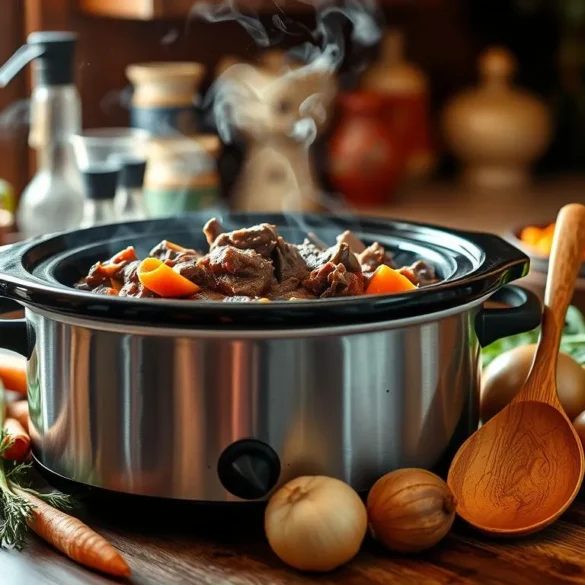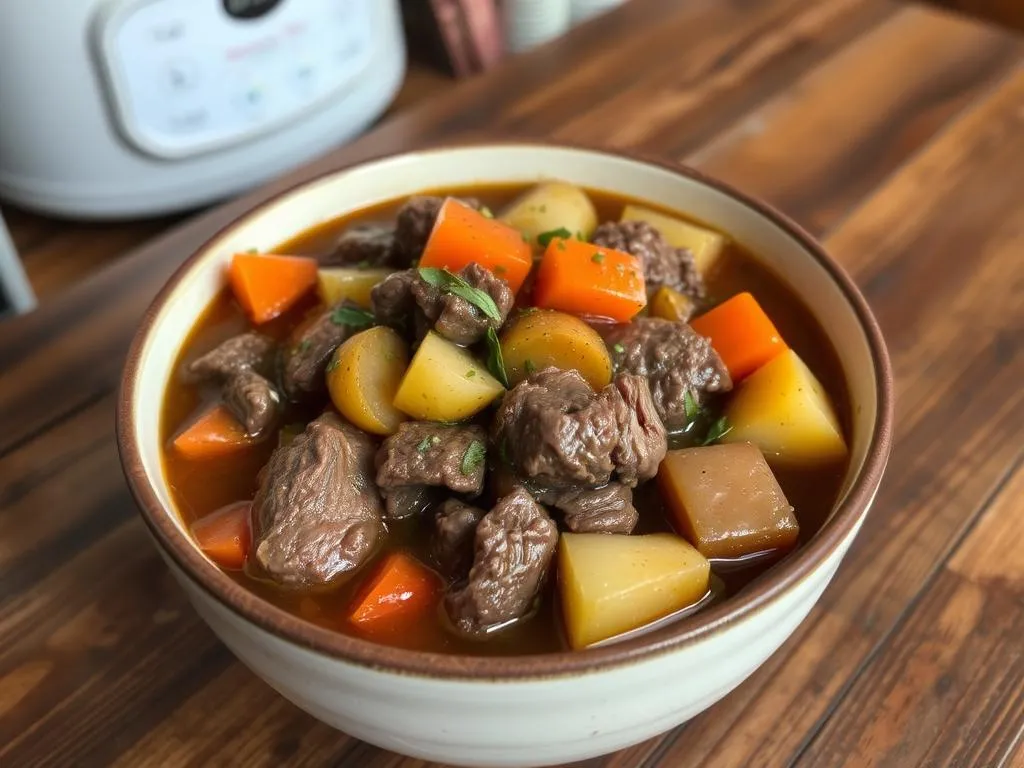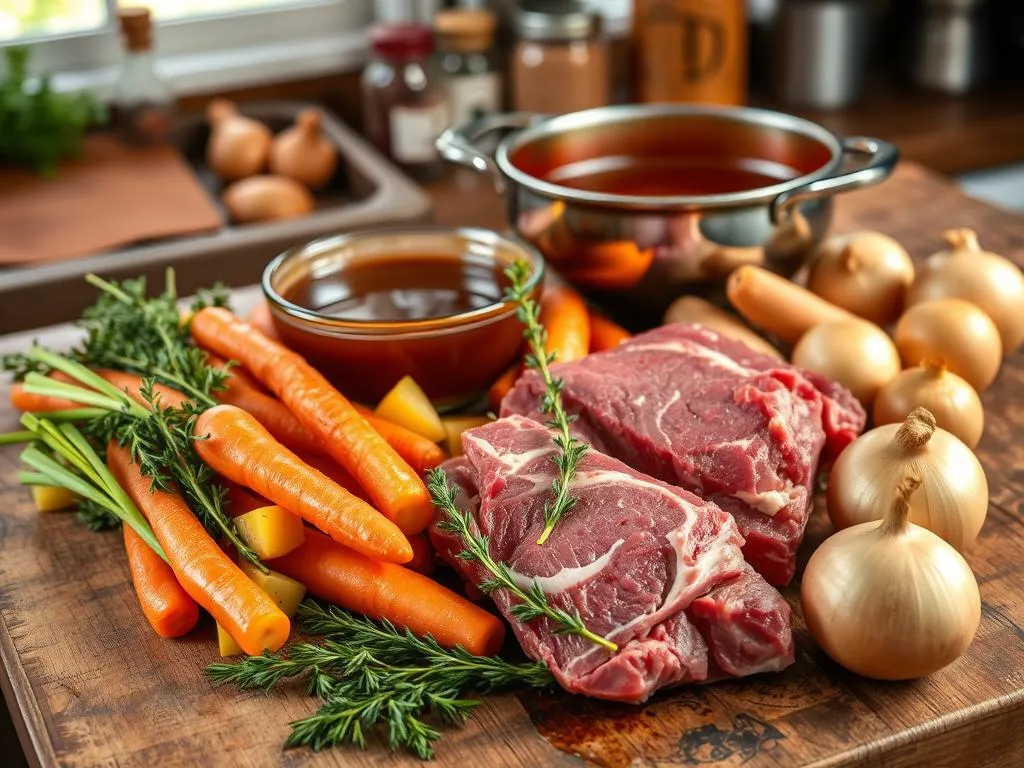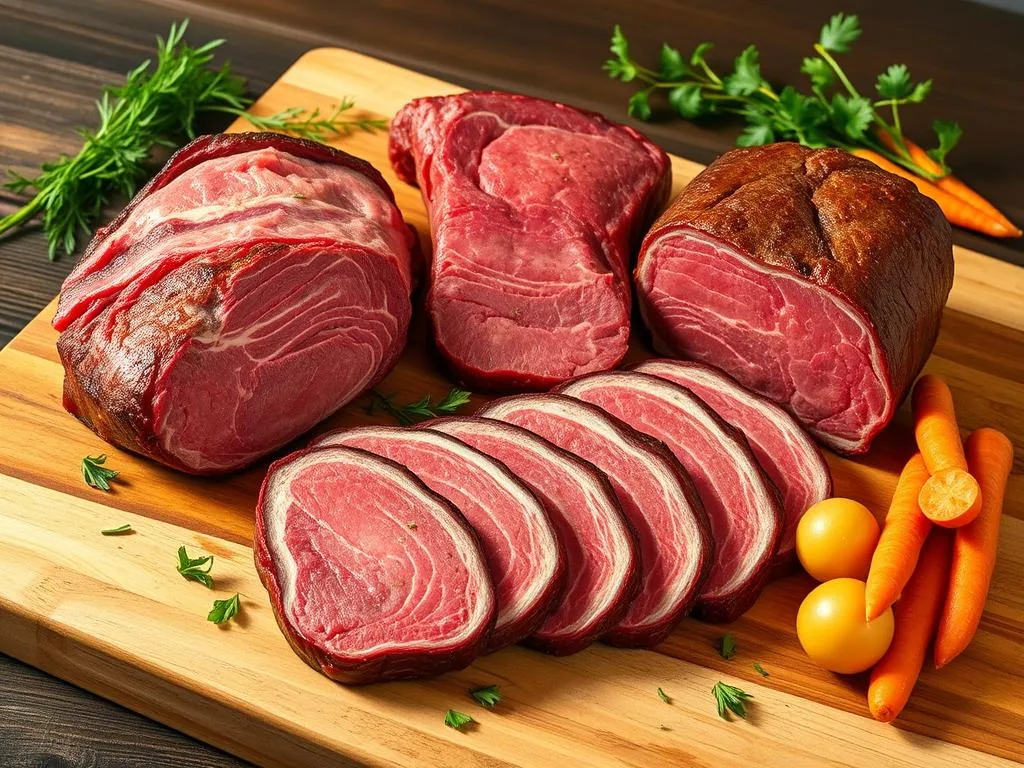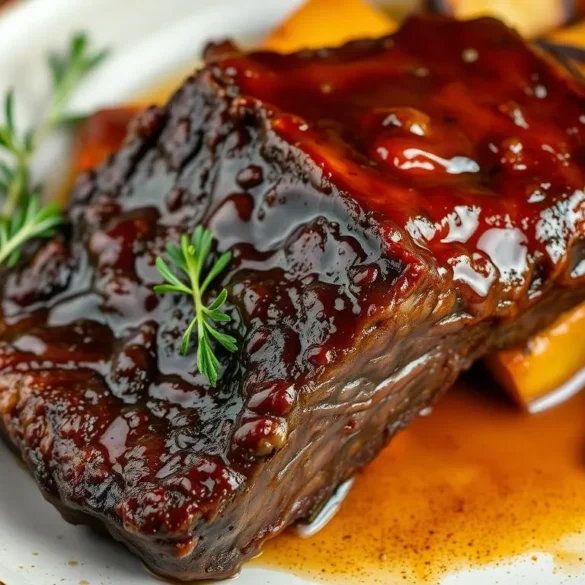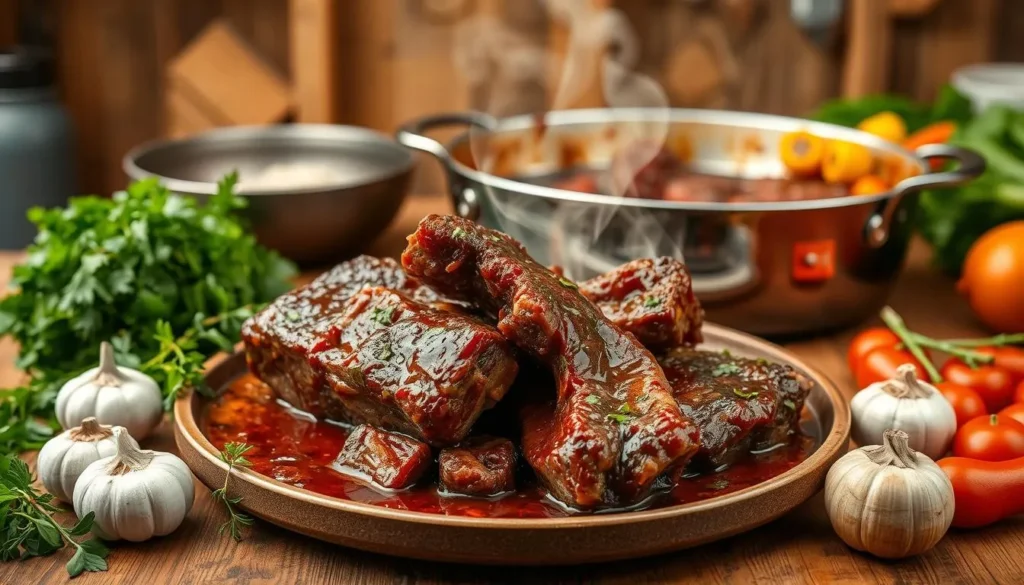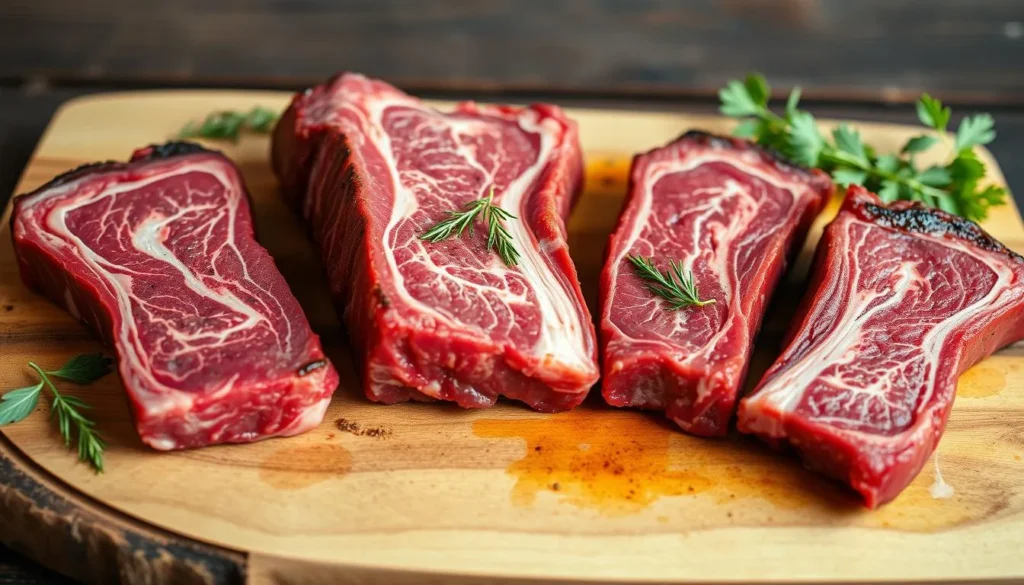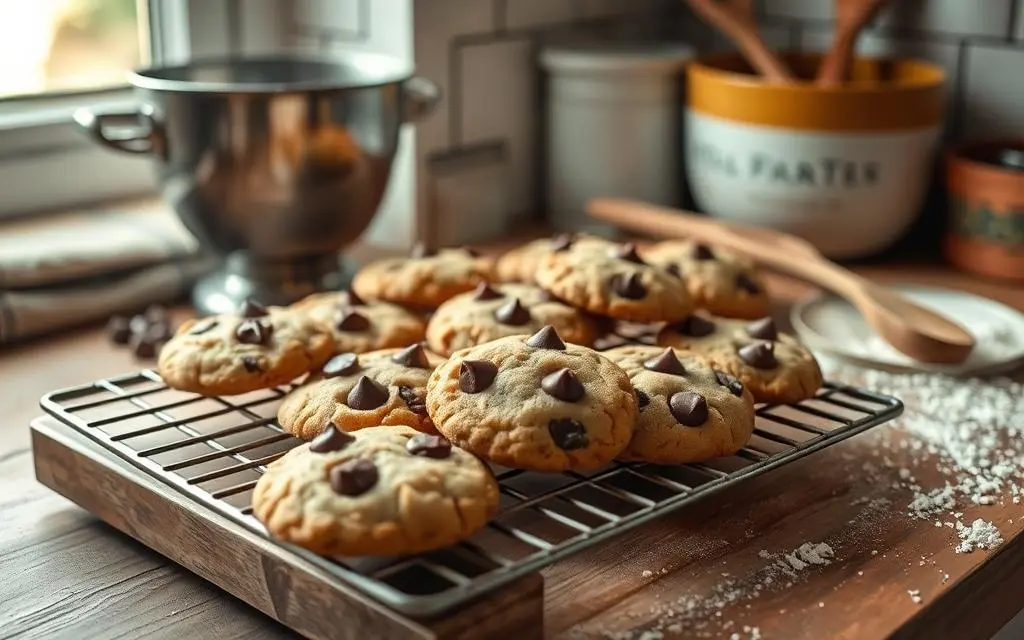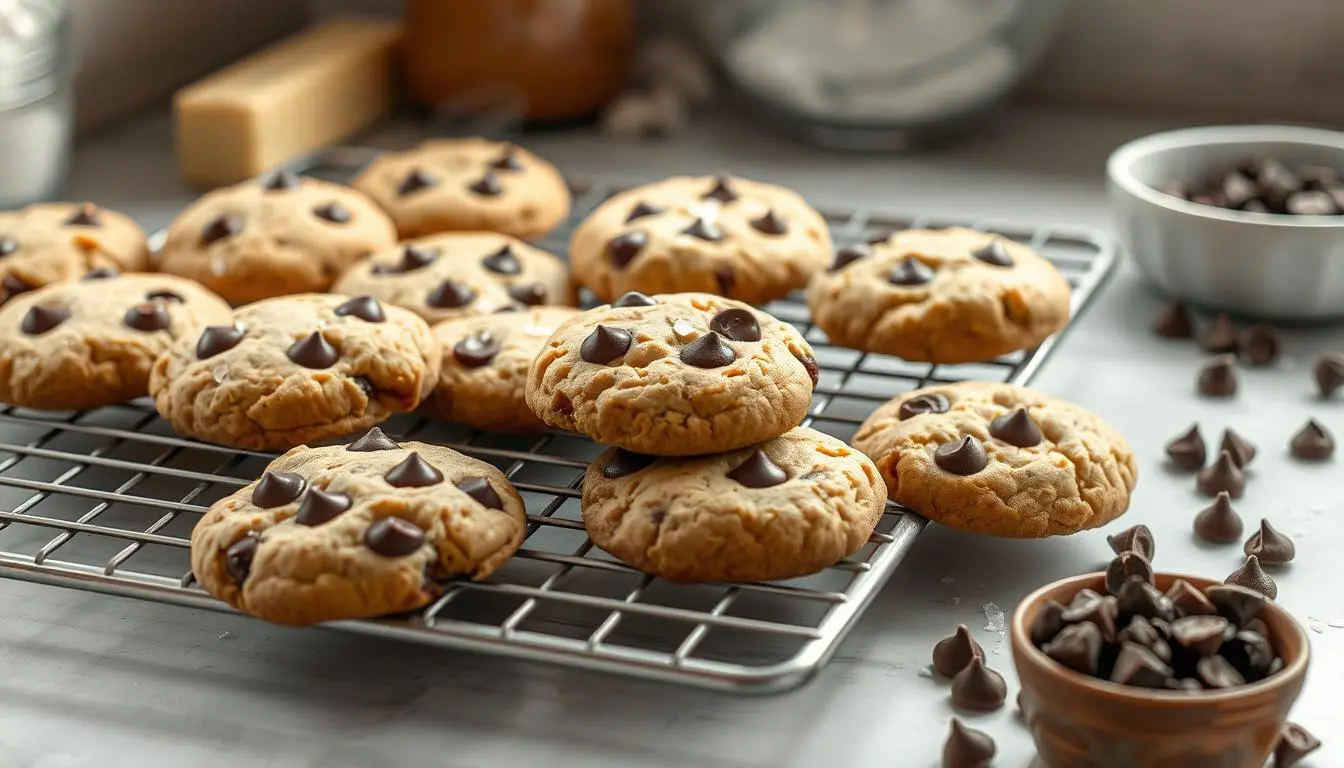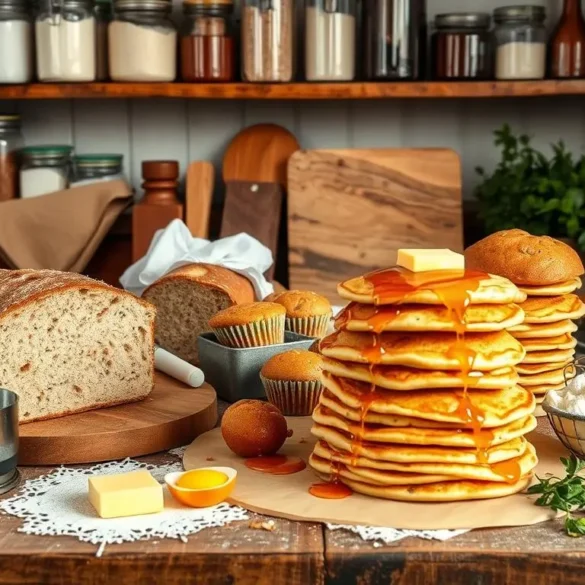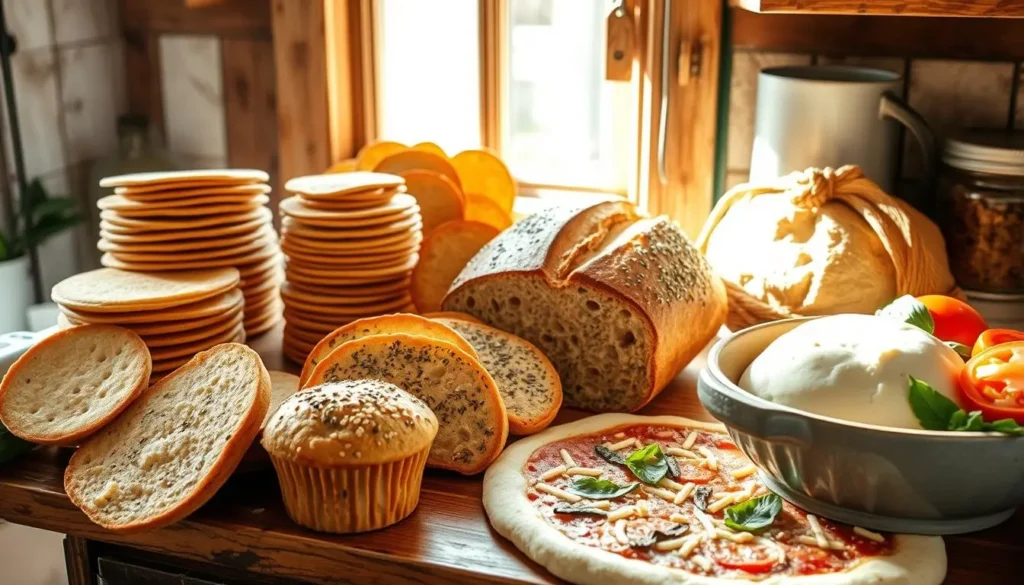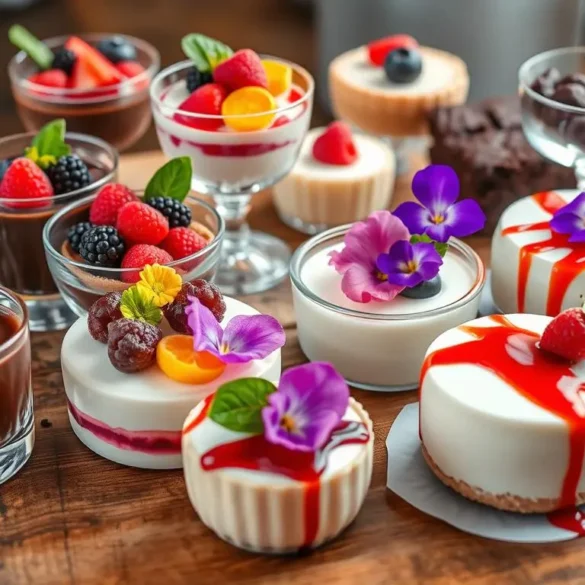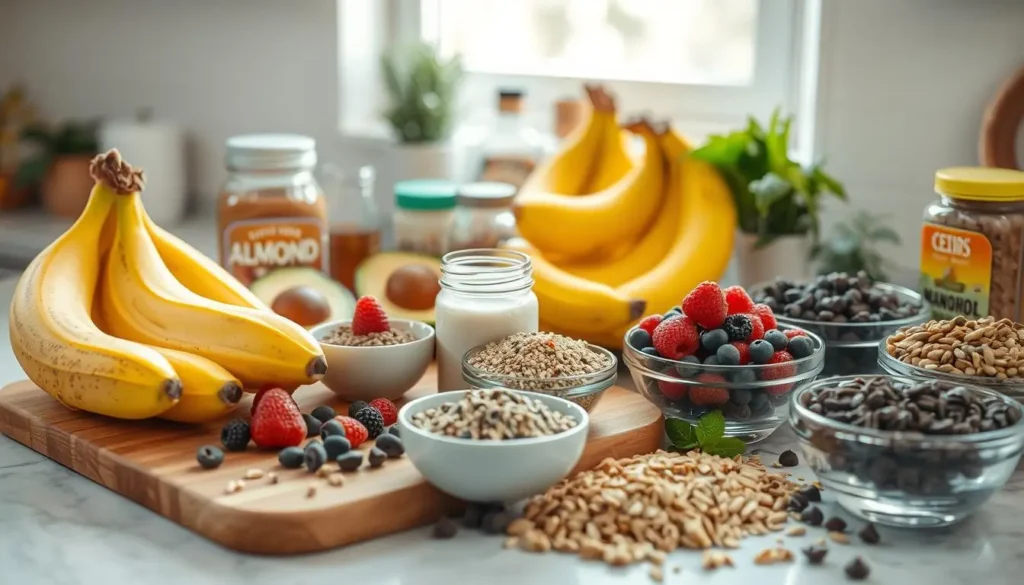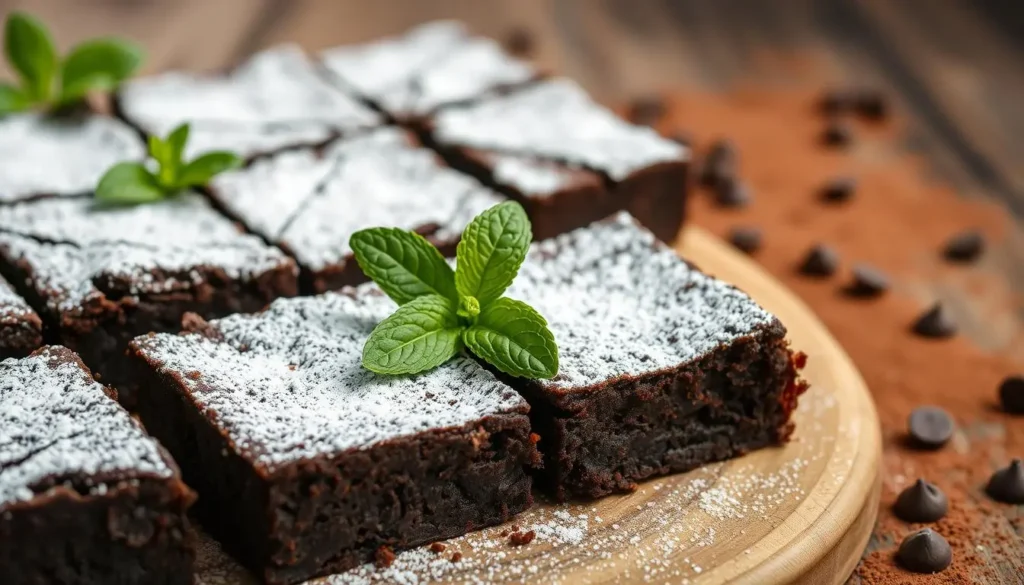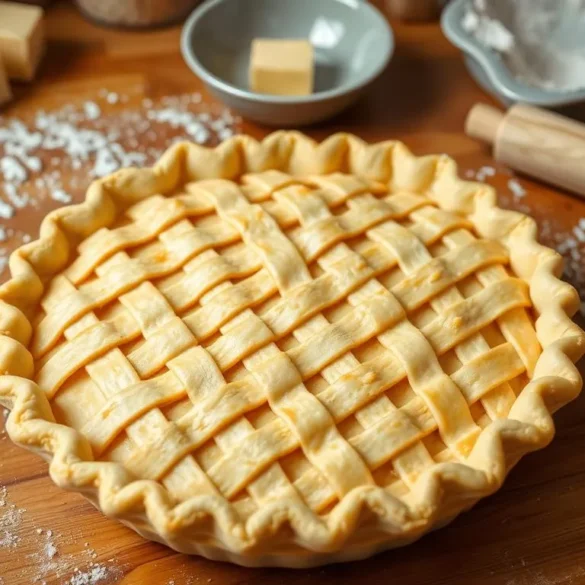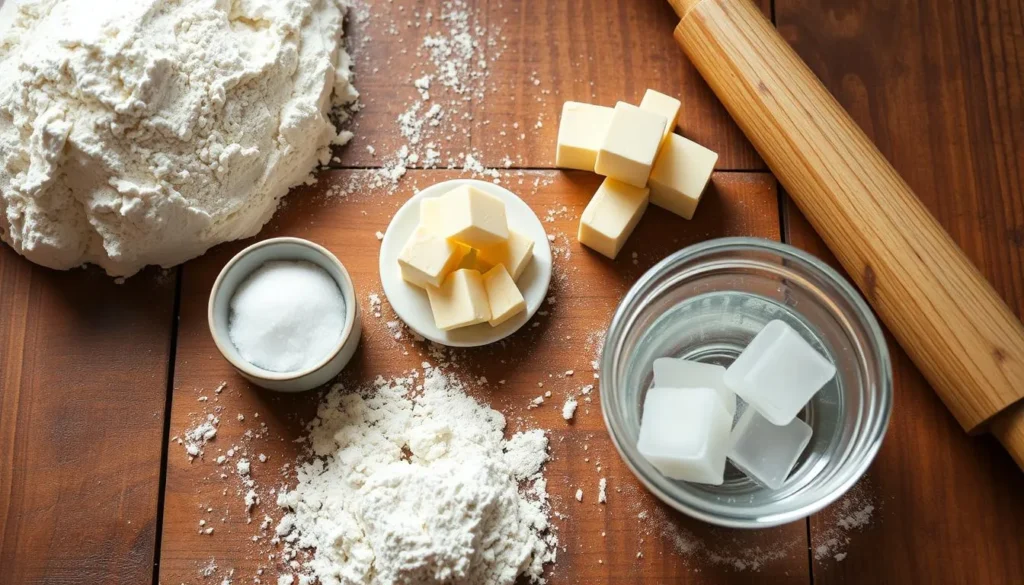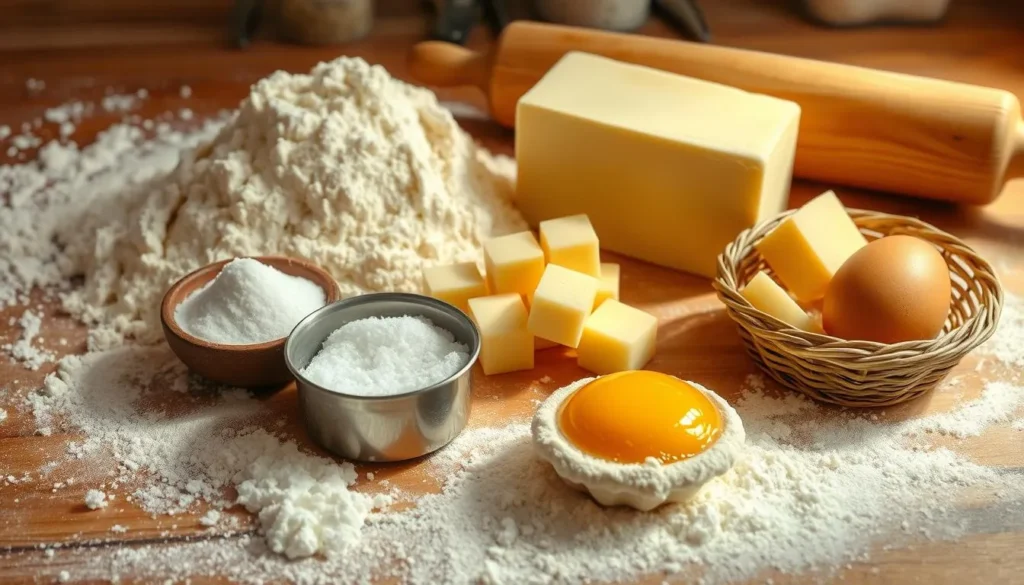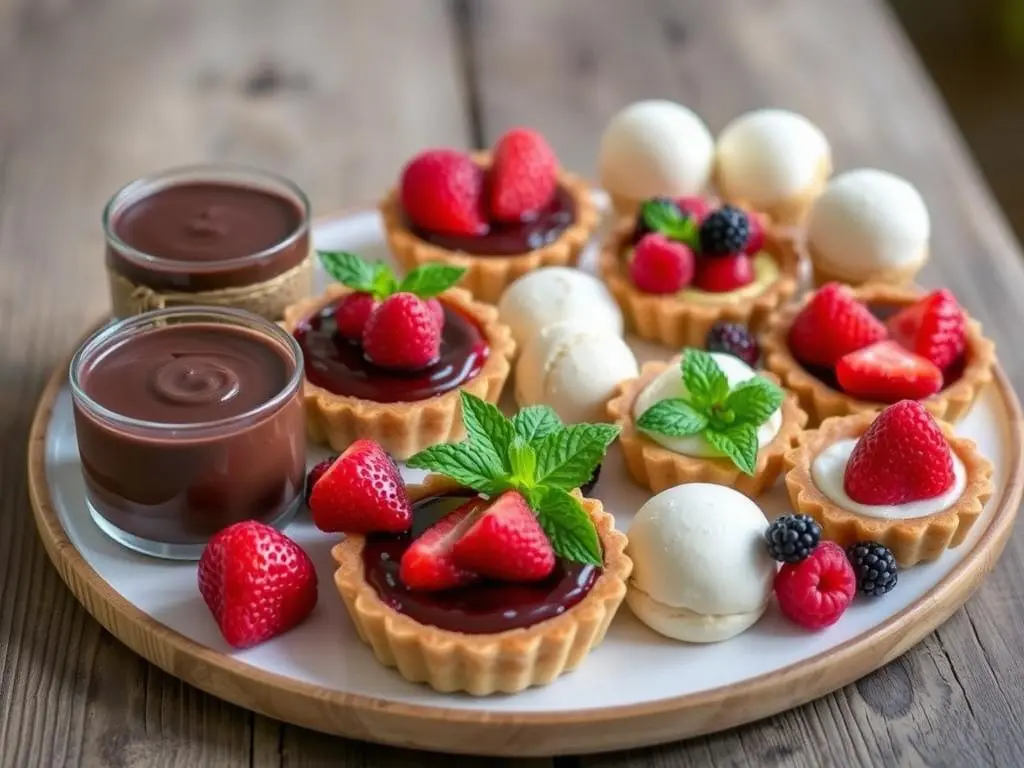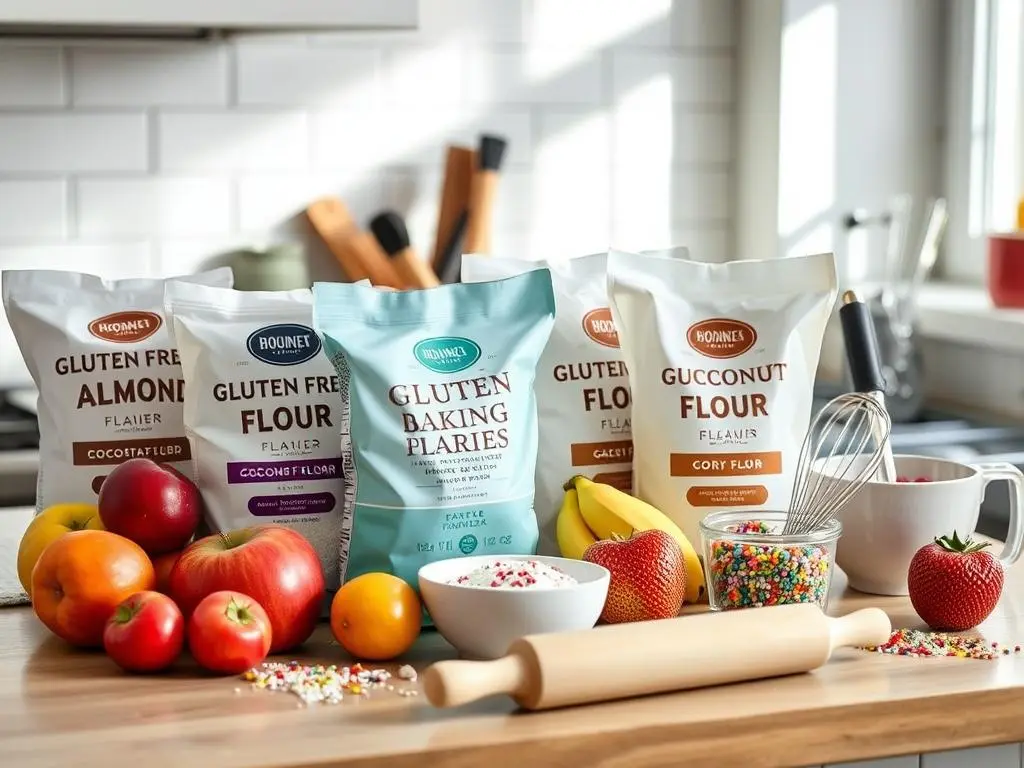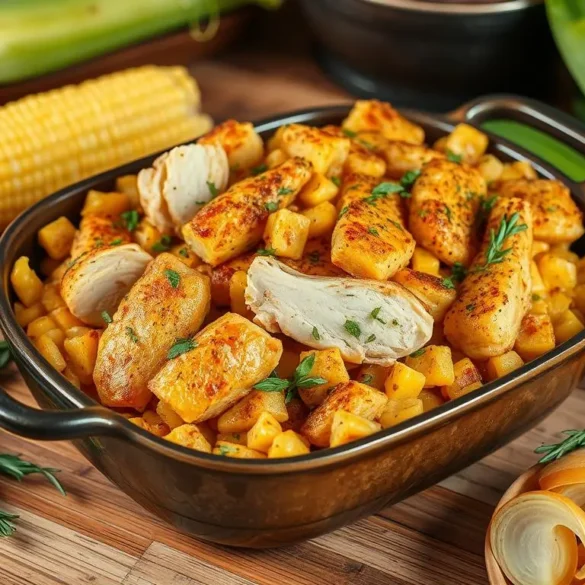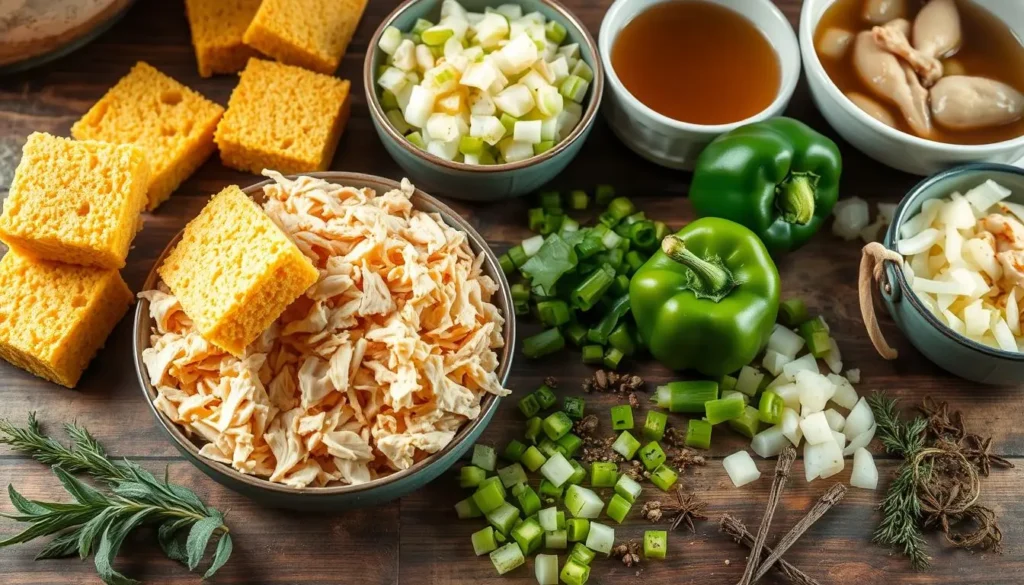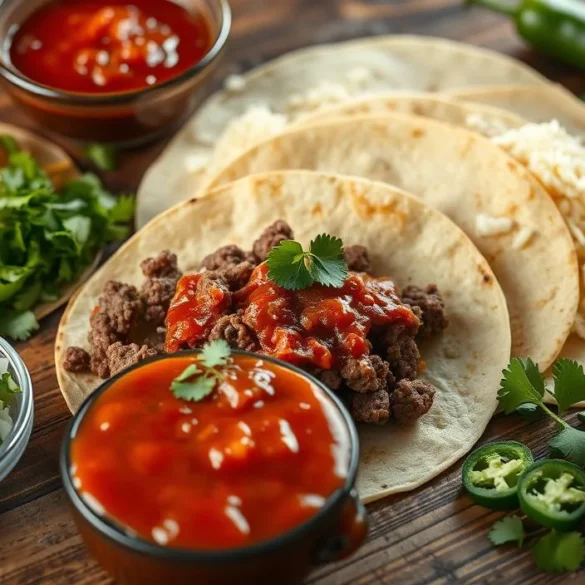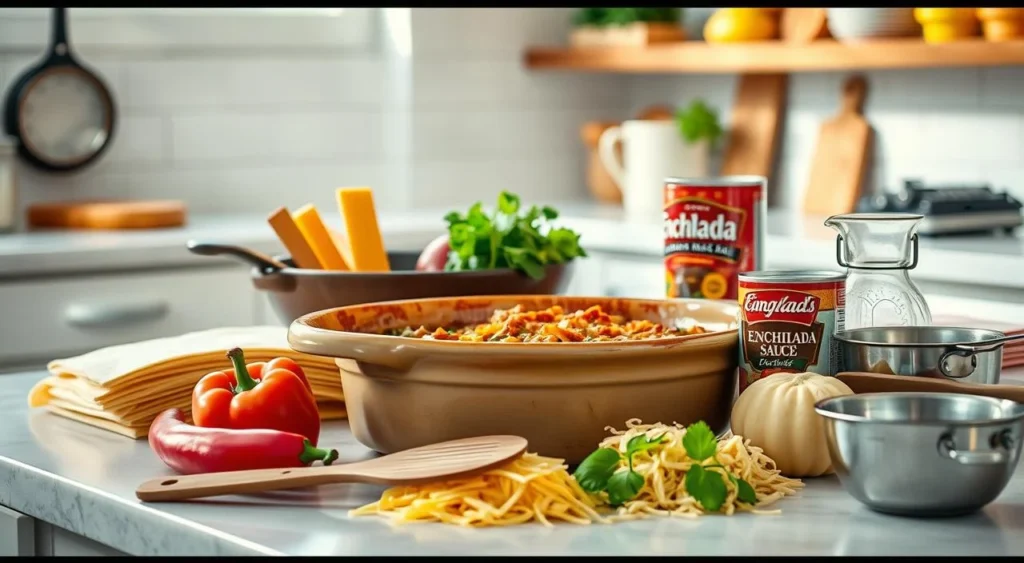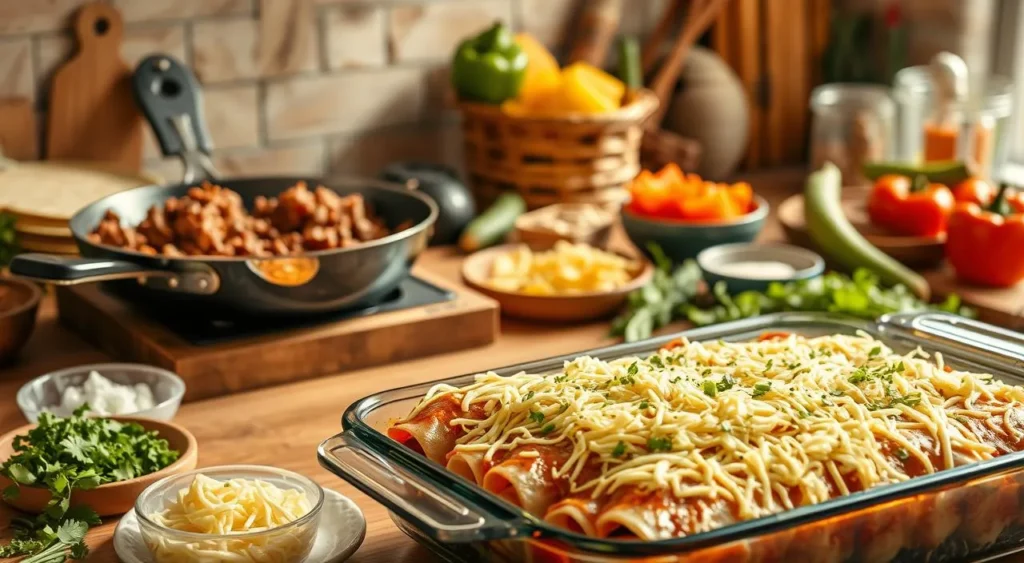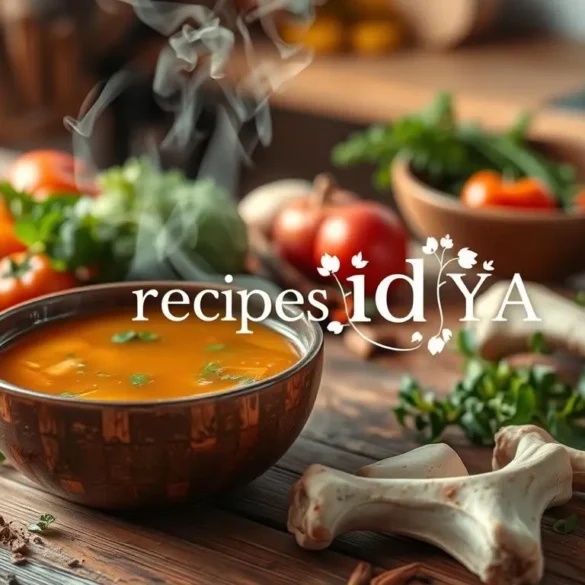
Ingredients
- 1 whole chicken (about 3-4 lbs), cut into pieces
- 10 cups water
- 2 medium carrots, peeled and chopped
- 3 celery stalks, chopped
- 1 onion, quartered
- 3 cloves garlic, smashed
- 2 bay leaves
- 1 tsp dried thyme Salt and pepper to taste Fresh parsley for garnish
Instructions
1. Place the chicken pieces in a large stockpot and cover with 10 cups of water.
2. Bring to a boil over medium-high heat, then reduce to low heat and simmer.
3. Skim off any foam or impurities that rise to the top of the pot.
4. Add the carrots, celery, onion, garlic, bay leaves, thyme, salt, and pepper.
5. Cover the pot and simmer for 2.5 to 3 hours, stirring occasionally.
6. Once the chicken is tender and the broth is flavorful, remove the chicken pieces and set aside to cool.
7. Remove the skin and bones from the chicken, then shred the meat and return it to the soup.
8. Taste the soup and adjust seasoning if needed. Garnish with fresh parsley before serving."
Notes
For a richer broth, you can roast the chicken pieces in the oven at 400°F for 30 minutes before adding to the pot. If you prefer a clearer broth, strain the soup after simmering to remove vegetable chunks and herbs. This soup can be stored in the fridge for up to 3 days or frozen for up to 3 months.
Table of Contents
Chicken soup with Bones is a favorite comfort food, loved for its warmth and healing qualities. But its true magic comes from the broth made from chicken bones. This broth adds a depth of flavor that store-bought soups can’t match.
In this guide, we’ll show you how to make chicken soup from bones. You’ll learn the secrets to a flavorful broth that will wow your taste buds. Whether you’re an experienced cook or just starting out, you’ll find the techniques and ingredients you need to make the perfect bone-based chicken soup.
Key Takeaways
- Discover the health benefits and nutritional profile of bone-rich chicken broth
- Learn how to select the best chicken bones for maximum flavor
- Understand the essential equipment and step-by-step process for making homemade bone broth
- Explore creative ways to incorporate bone broth into your cooking and recipes
- Avoid common mistakes when making bone broth for a consistently delicious result
Understanding the Magic of Bone-Based Chicken Soup with Broth
Chicken soup made with bones is a true culinary wonder. It has a rich flavor and lots of nutrients. The secret is the collagen and minerals from the bones, which are released when simmered. This homemade how do you make bone broth method brings many health benefits, making it great for nourishing your body.
Health Benefits of Bone-Rich Broth
Drinking chicken bone broth benefits can help your health in many ways. The collagen in it is good for your joints and skin. It also has minerals like calcium and magnesium that are great for your bones. Plus, the amino acids in it can help with digestion and keep your immune system strong.
Nutritional Profile of Homemade Stock
Homemade chicken stock made from bones is much better than store-bought. It’s full of nutrients because it’s simmered slowly. This process pulls out good stuff like gelatin and glucosamine, which aren’t in commercial soups. So, homemade how do you make bone broth is packed with vitamins, minerals, and compounds that are good for your health.
Why Commercial Soups Don’t Compare
Store-bought chicken soups are easy but not as good as homemade. They often don’t have as much flavor or nutrients. They use water, salt, and fake flavorings instead of real bones. But, making bone-based chicken bone broth benefits broth is a lot of work. It’s simmered for hours to get all the good stuff from the bones and cartilage.
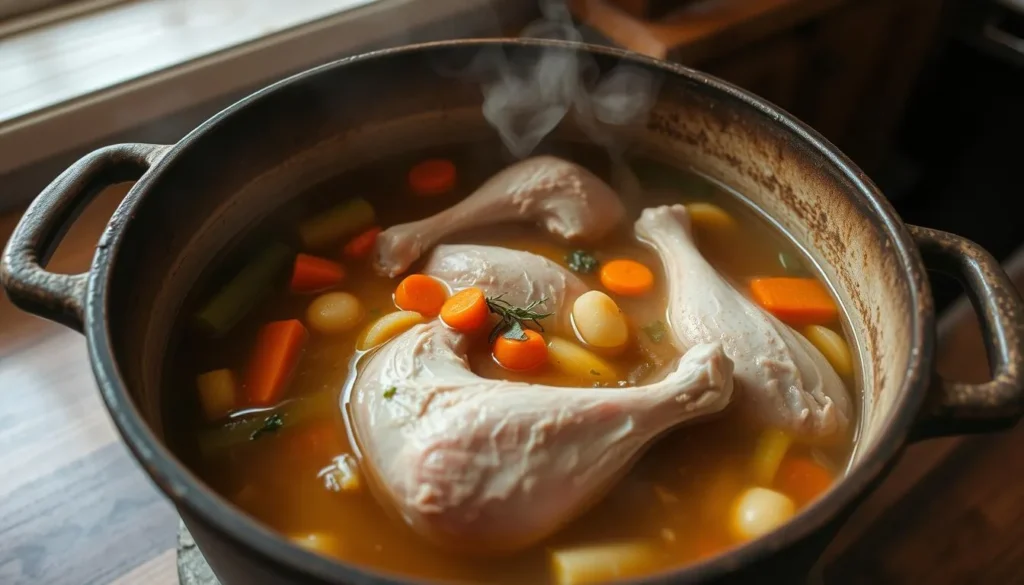
Essential Ingredients for Perfect Chicken Soup from Bones
To make a delicious and healthy chicken soup from bones, you need the right ingredients. The main chicken soup ingredients and bone broth essentials are:
- A variety of chicken bones, such as backs, necks, feet, and wings, which provide collagen, gelatin, and vital minerals.
- Aromatic vegetables like onions, carrots, celery, and garlic, which add depth and complexity to the broth.
- Fresh herbs like thyme, parsley, and bay leaves, which infuse the soup with fragrant flavors.
- Spices like black peppercorns, allspice, and cloves, which enhance the overall taste profile.
- Sea salt or Himalayan pink salt, which helps balance the flavors and brings out the natural sweetness of the ingredients.
Using these key elements makes your homemade chicken soup from bones both tasty and nutritious.
“The secret to the perfect chicken soup lies in the bones. By simmering a variety of chicken bones, you unlock a world of flavor and nourishment.”
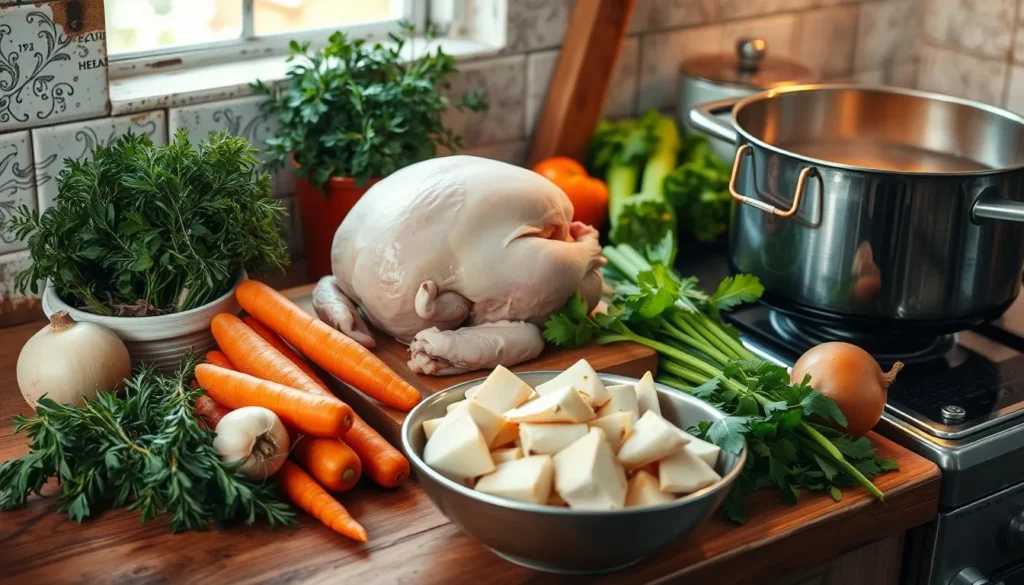
The quality and freshness of your ingredients matter a lot. Choose high-quality, organic, and ethically raised chicken bones and vegetables for the best taste and nutrition.
Selecting the Right Chicken Bones for Your Soup
Choosing the right chicken bones is key to a delicious homemade chicken soup. Whether you pick fresh or roasted bones, knowing their differences is crucial. This knowledge helps you make the best broth possible.
Fresh vs. Roasted Bones
Fresh chicken bones, like those from a whole roasted chicken, make a lighter broth. They add a silky texture and a hint of sweetness. Roasted bones, however, give a deeper flavor. The roasting caramelizes sugars, making the broth richer and more savory.
Best Cuts for Rich Flavor
- Chicken backs and necks: These cuts are full of connective tissue, adding depth to the broth.
- Chicken feet: Though they might seem unusual, they’re packed with gelatin for a velvety soup.
- Chicken wings: With bones, skin, and cartilage, they create a broth full of umami.
Storage and Preparation Tips
- Freeze fresh chicken bones until you’re ready to use them. This keeps their flavor and nutrients.
- Roast bones at 400°F (200°C) for 30-45 minutes before simmering. It boosts their sweetness and aroma.
- Always rinse and clean the bones well before simmering. This removes excess fat and impurities.
By choosing the right chicken bones for soup and preparing them well, you can make an amazing homemade broth. This will give you a truly exceptional chicken soup experience.
Basic Equipment Needed for Making Bone Broth
Making delicious bone broth at home needs a few key tools and equipment. Whether you’re aiming for tasty chicken soup or healthy bone broth, the right tools matter. Let’s look at the essential items for your bone broth-making journey.
A large stockpot is at the core of your bone broth setup. Choose a heavy-duty, stainless steel or enameled cast-iron pot. It should hold all your bones and liquid. A pot with 8 to 12 quarts is usually enough for most cooks.
- Large stockpot (8-12 quarts)
- Fine-mesh strainer or cheesecloth
- Storage containers (glass jars or BPA-free plastic)
- Slow cooker or pressure cooker (optional)
To get the most flavor and nutrients from your bones, a good strainer or cheesecloth is key. It helps you get a clear, sediment-free broth. This broth is perfect for drinking or adding to recipes.
Remember storage containers too. Reliable, airtight vessels like glass jars or BPA-free plastic keep your bone broth fresh. This way, it’s always ready to use.
If you like easy cooking, a slow cooker or pressure cooker can be a big help. These appliances let you cook your bone broth without much effort. Just set it and forget it.
| Item | Purpose |
|---|---|
| Large stockpot | Holds bones and simmering liquid |
| Fine-mesh strainer | Filters out solids for a clear broth |
| Storage containers | Preserves and stores bone broth |
| Slow cooker/Pressure cooker | Convenient cooking methods for bone broth |
With these bone broth equipment and tools for making chicken soup, you’re set to make the best broths and soups at home. Enjoy your cooking journey!
Step-by-Step Guide to Making Chicken Soup from Bones
Making chicken soup from bones is easy and rewarding. It’s great for how to make chicken bone broth or a classic chicken soup from bones recipe. The secret is in the preparation and cooking.
Preparation Process
Start by collecting your chicken bones. Use a mix of bones like feet, necks, and backs for a full broth. Rinse them under cold water to clean them.
Put the bones in a big stockpot and cover with cold water. Boil, then lower the heat and simmer for 30 minutes. This step cleans the bones for the next step.
Cooking Techniques
Drain the water and add fresh, cold water. Simmer the bones for 6-8 hours for a rich broth. Skim off any foam that forms.
Add veggies like onions, carrots, and celery for flavor. Herbs and spices like bay leaves and thyme also add depth.
Straining and Finishing
Strain the broth through a fine-mesh sieve after simmering. Throw away the solids. Let the broth cool a bit before storing it in airtight containers.
Season the broth with salt and herbs for taste. Your homemade chicken soup from bones recipe is now ready to enjoy or use in other dishes.
Creating great how to make chicken bone broth takes patience and care. With time and attention, you’ll have a nourishing broth that boosts your cooking.
Adding Vegetables and Aromatics for Enhanced Flavor
Boosting the flavor of your homemade chicken soup is easy. Just add the right mix of vegetables and aromatic ingredients. These additions turn a simple bone broth into a flavorful masterpiece that will delight your taste buds.
For bone broth vegetables, you have many choices. Carrots, celery, and onions are great for a rich, earthy taste. But don’t just stop there. Try herbs like thyme, rosemary, and bay leaves, or spices like black peppercorns and whole allspice berries for more flavor.
For sweetness and depth, add fresh ginger or a bit of honey. Leafy greens like kale or spinach add unique flavors and nutrients. Mushrooms and garlic bring a rich, savory taste.
| Vegetable | Aromatic |
|---|---|
| Carrots | Thyme |
| Celery | Rosemary |
| Onions | Bay Leaves |
| Mushrooms | Peppercorns |
| Spinach | Ginger |
Experiment to find the perfect mix of bone broth vegetables and aromatics for chicken soup for you. With a bit of creativity, your homemade chicken soup can become incredibly flavorful and satisfying.
“The secret to a great soup lies in the harmonious blend of its ingredients.”
Common Mistakes to Avoid When Making Bone Broth
Making the perfect bone broth can be tricky. A few common mistakes can affect the taste and quality. Keep these bone broth mistakes and tips for perfect chicken soup in mind for a smooth process.
Temperature Control Issues
Getting the temperature right is key when simmering bone broth. Boiling too hard can make it cloudy and thick. On the other hand, a low temperature might not get all the nutrients out. Aim for a gentle simmer between 195°F and 205°F for the best flavor and health benefits.
Seasoning Errors
Seasoning is crucial for a great bone broth. Too little salt makes it taste flat, while too much can overpower the flavors. Start with a small amount of salt and adjust to taste. Try different herbs, spices, and aromatics to find the perfect balance.
Cooking Time Mistakes
The cooking time affects the broth’s consistency and taste. Cooking it too short makes it watery, while too long can make it bitter. Aim for 6-8 hours of simmering for a rich, gelatinous broth.
By avoiding these bone broth mistakes and following these tips for perfect chicken soup, you’ll make an amazing homemade bone broth. It will take your cooking to the next level.
Storage Tips and Shelf Life of Homemade Bone Broth
Keeping your homemade chicken bone broth fresh is key to enjoying its health benefits. The right storage methods can help your broth stay good for longer. This way, you can always have its tasty goodness ready when you want it. Let’s look at the best ways to store your homemade bone broth and how long it stays fresh.
Refrigeration and Freezing Methods
After your bone broth cools down, you can keep it in the fridge for up to 5 days. To keep it longer, put it in airtight containers or freezer bags. Make sure to leave some space for it to expand when it freezes.
Freezing your broth can make it last up to 6 months. Just thaw it in the fridge or in warm water when you’re ready to use it.
Portioning and Thawing Frozen Broth
- Split the broth into smaller portions before freezing for easier use.
- Freeze it in ice cube trays or muffin tins for quick access to small amounts.
- To thaw, put the portion in the fridge or in warm water on the stovetop.
| Storage Method | Shelf Life |
|---|---|
| Refrigerator | Up to 5 days |
| Freezer | Up to 6 months |
By using these how to store bone broth tips, your homemade broth will stay tasty and healthy. This lets you enjoy its benefits whenever you like.
Creative Ways to Use Leftover Bone Broth
Homemade chicken bone broth is more than just for soups. If you have a lot of it, try these creative ways to use it. They’ll help you make the most of your bone broth.
Alternative Bone Broth Recipes
Bone broth is great for many dishes. Use it to cook grains like rice or quinoa. It’s also a good substitute for water or stock in sauces, gravies, and stews. This adds a rich, savory flavor to your meals.
- Bone Broth Risotto: Substitute bone broth for traditional stock when making creamy risotto.
- Bone Broth Braised Greens: Simmer leafy greens like kale or spinach in bone broth for a nutrient-dense side dish.
- Bone Broth Gravy: Use bone broth as the foundation for a deeply flavorful gravy to serve over mashed potatoes or roasted meats.
Cooking Applications for Bone Broth
Beyond recipes, bone broth is versatile in cooking. Use it instead of water when boiling pasta or cooking grains. It adds extra flavor. You can also freeze it in ice cube trays for easy use later.
| Cooking Application | How to Use Bone Broth |
|---|---|
| Pasta Cooking Water | Substitute bone broth for the cooking water when boiling pasta |
| Grain Cooking Liquid | Use bone broth instead of water when cooking rice, quinoa, or other grains |
| Freezer Cubes | Pour bone broth into ice cube trays and freeze for easy, portioned access |
With these ideas, you can use your homemade bone broth recipes in new ways. You’ll find many uses for chicken stock in your daily cooking.
Conclusion
Homemade chicken soup from bones offers many benefits. It creates a rich, flavorful broth that’s packed with nutrients. This summary shows why this cooking method is so valuable:
First, homemade chicken soup is great for your health. It’s full of collagen, amino acids, and minerals. These help strengthen your immune system, improve gut health, and support healthy skin and joints. Unlike store-bought soups, your homemade version has no preservatives or artificial ingredients. This means you get pure, wholesome nourishment with every spoonful.
Making chicken soup from bones is also very rewarding. The soothing aromas and the hands-on preparation are enjoyable. Plus, the sense of accomplishment you feel when serving your own homemade soup is unbeatable. We encourage you to try this method and experience the superior flavor and nutrition of homemade bone broth.
FAQ
What are the health benefits of bone-rich broth?
Bone broth is packed with collagen, minerals, and nutrients. It supports gut health, joint function, and overall well-being. Homemade broth is much more nutritious than store-bought soups.
What type of chicken bones are best for making broth?
Use a mix of fresh and roasted chicken bones. Include wings, backs, and necks for the best flavor and nutrients. Don’t just use boneless chicken breasts.
What equipment is needed to make bone broth?
You’ll need a large stockpot, a strainer, and containers for storing. A slow cooker or pressure cooker can also make the process easier.
How do I avoid common mistakes when making bone broth?
Avoid temperature issues, over-seasoning, and not cooking it long enough. Keep the temperature right, season slowly, and be patient for the best broth.
How long can homemade bone broth be stored?
Bone broth can last 5 days in the fridge or 6 months in the freezer. Divide it into smaller containers for easy thawing and use.
What are some creative ways to use leftover bone broth?
Use it as a base for sauces, gravies, and risottos. It’s also great in soups, stews, and baked goods. It makes your cooking better.




